

/en/outlook2010/managing-your-calendars/content/
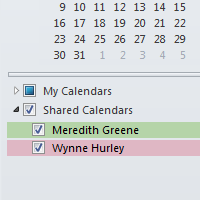
Outlook 2010 makes it easy to share your schedule and availability, a feature commonly used in the workplace to collaborate and arrange meetings.
In this lesson, you'll learn how to share your calendar and schedule meetings in an office environment. We'll also talk about using Schedule view to find the best possible time for group meetings and how to set your availability.
You must be connected to a Microsoft Exchange Server in order to use the features discussed in this lesson. If you are using Outlook 2010 on your home computer, you won't be able to use the calendar sharing and meeting features available to those using Outlook in the workplace.
In order to schedule meetings with other people in your workplace, your calendar must first be shared. Keep in mind that sharing can vary depending on your office's network, and your IT department may have already set your calendar sharing settings.
 Sharing a calendar
Sharing a calendarClick the buttons in the interactive below to learn more about different calendar sharing options.
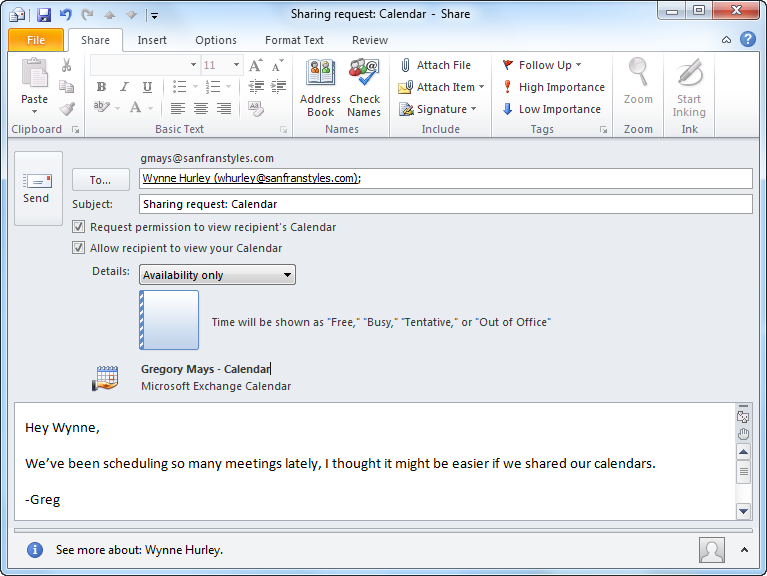
Check this box to request that your recipients share their calendars with you.
Check this box to share your calendar with the recipient(s). This option should be selected by default.
Add a subject to let the recipient(s) know that they've been invited to see your calendar.
Add recipients to the sharing invitation as you would an email message. Your calendar will be shared with all recipients.
If you like, you can include a message to let your recipient(s) know why you're choosing to share your calendar.
Click the Details drop-down button to choose what information will be shared from your calendar. There are three availability options:
• Choose Availability only if you want to share just your Free/Busy time.
• Choose Limited details if you want to share the time and subject of your appointments.
• Choose Full details if you want to share all information about your appointments, including location.

When you've finished modifying the sharing settings, click Send to share your calendar.
Whenever someone shares a calendar, you will need to open that calendar to view its details.
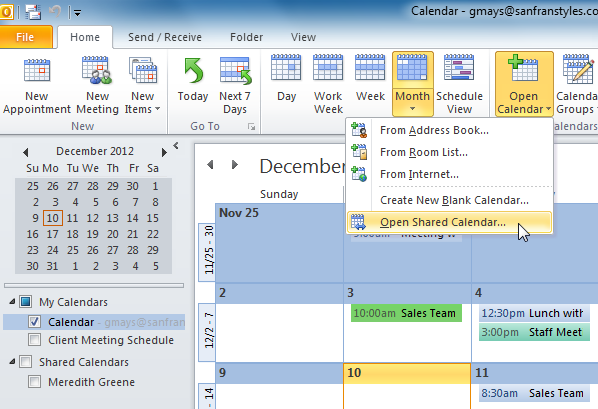 Opening a shared calendar
Opening a shared calendar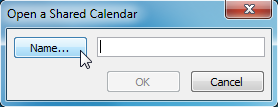 Clicking the Name... button
Clicking the Name... button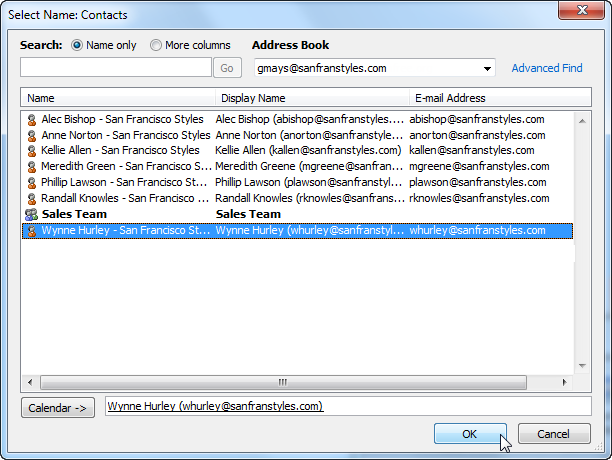 Adding a calendar from the address book
Adding a calendar from the address book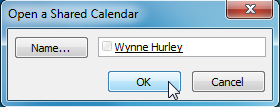 Clicking OK
Clicking OK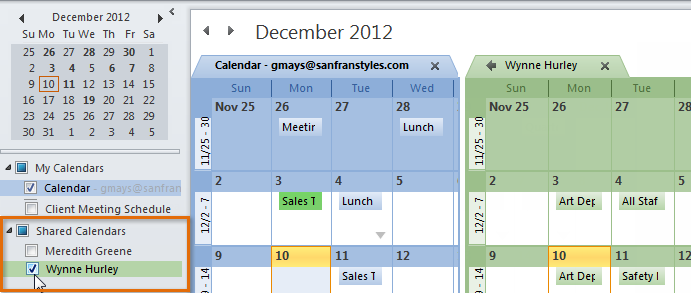 Viewing a shared calendar
Viewing a shared calendarOnce your calendar is shared with other users in your workplace, you can use your shared calendars to schedule meetings.
A meeting is just like an appointment on your calendar, but with other attendees. To schedule a meeting, you must first send a meeting request.
 Scheduling a new meeting
Scheduling a new meeting Adding attendees
Adding attendees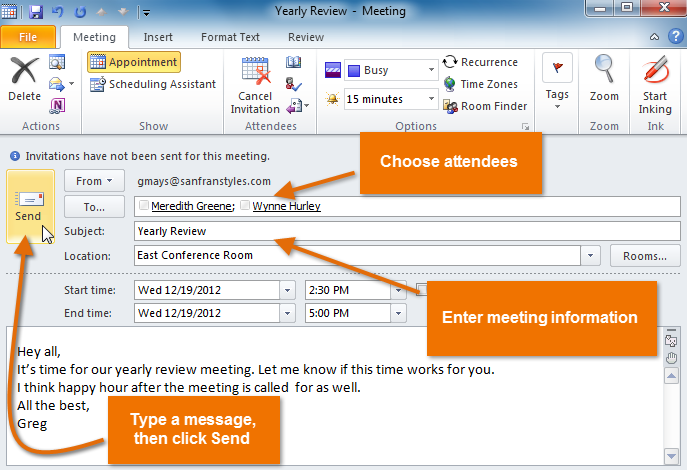 Sending a meeting request
Sending a meeting request The scheduled meeting across three shared calendars
The scheduled meeting across three shared calendarsWhen someone wants to schedule a meeting with you, you will receive a meeting request as an email message.
 Selecting the meeting request
Selecting the meeting request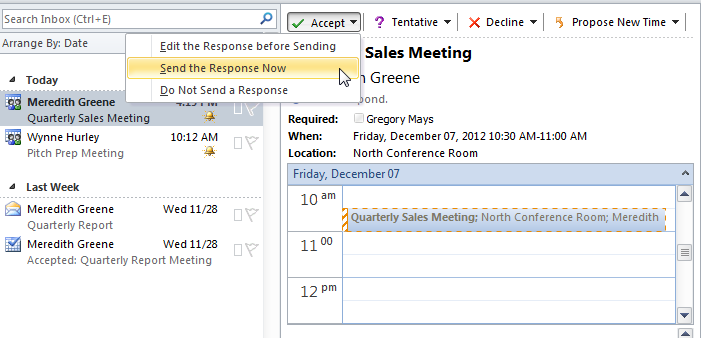 Accepting a meeting request
Accepting a meeting request The added meeting
The added meetingYou can also request to reschedule a meeting directly from a meeting request. Just click Propose New Time, then select the desired option from the drop-down menu. The New Meeting dialog box will appear, allowing you to propose a new time to all meeting attendees.
 Proposing a new time for a requested meeting
Proposing a new time for a requested meetingIf you need to schedule a meeting with a lot of people, it can be difficult to find a time that's best for everyone. Schedule view allows you to see a simplified version of your shared calendars, which makes it easy to find the perfect time for your next meeting.
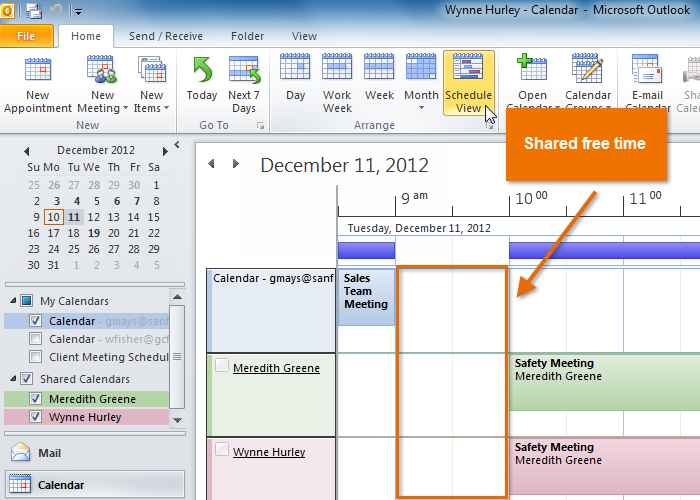 Using Schedule view to find shared free time for a meeting
Using Schedule view to find shared free time for a meetingBy default, any scheduled appointments and meetings will appear as busy time in Schedule view, while all other time will appear as free. However, if you keep an especially busy schedule, you may wish to set additional free and busy times. For example, you may wish to set certain hours as busy to put aside time for your own work. Alternatively, you may wish to set certain hours as free if you want people to know you're available.
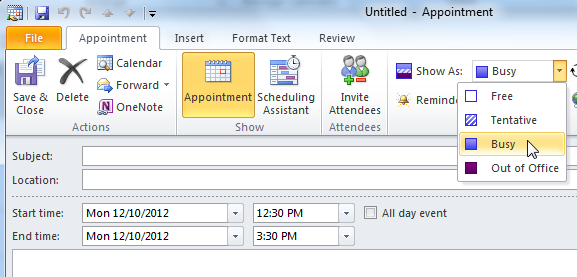 Setting availability
Setting availability